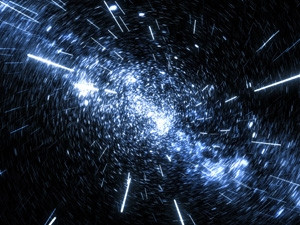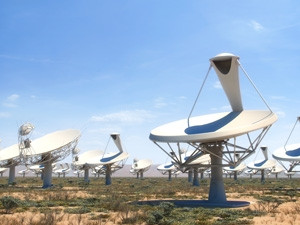
SA's Square Kilometre Array (SKA) project team is pushing the boundaries of computing innovation, as it grapples with finding solutions to deal with the massive amounts of data that will be pouring in.
The multibillion-rand project is moving towards completion of the prototype phase - MeerKat - which this week saw the last foundation poured for the 64-dish project. MeerKat will be incorporated into the SKA. Construction will start in 2016/17, with some elements operational by 2020, and full operation under way in 2025.
However, the telescopes will have to handle a wealth of data as they probe the mysteries of the universe, for which serious and cutting-edge computing power will be required, some of which has yet to be developed.
Tons of data
Francois Kapp, manager of digital systems at SKA SA, says to a certain extent the project is testing the future of computing technology. He notes the 64-dish MeerKat will pull in 40Gb of data every second per dish, translating into 1Tbps of data that needs to be dealt with.
Kapp explains the MeerKat will have 10 times more antennas than Kat 7 - MeerKat's forerunner - and three times the bandwidth, which equates to a processing problem that will increase 300-fold.
The project, while seeking currently available commercial solutions, to trim the cost, is being headed by South Africans, who are finding solutions to the computing challenges, says Kapp. He notes some of the designs made by the team have been used at other observatories around the world.
The SKA, which will be hosted by Australia and New Zealand, as well as SA and eight other African countries, will be a mega telescope, about 100 times more sensitive than the biggest existing radio telescope.
It will include 500 000 antennas, scattered across 3 000km in both southern Africa and Australia. Construction of the first two phases is expected to begin in 2017 and conclude in 2024, at an estimated cost to member countries of EUR1.5 billion.
The data collected by the SKA in a single day would take nearly two million years to play back on an iPod and it will need the processing power of almost 100 million PCs.
Finding solutions
The local SKA project is currently looking at solutions and is testing 40Gbps Ethernet switches, as well as developing a test system for MeerKat, says Kapp. He adds 10Gbps switches are only now going into mainstream servers.
Kapp says the test system is based on Roach 2 technology and will be deployed in the next few months. Kat 7 uses 16 Roach boards - or Reconfigurable Open Architecture Computing Hardware - and fits into a container, he notes.

The project could wait a while and use the pending Roach 3 system, which should give a four-fold increase in processing capacity, says Kapp. He adds MeerKat will need several hundred Roach boards, not just 16.
Kapp says Roach 3 is set to be designed and produced locally, while the previous two versions were made in the US. He hopes this will lead to exports for the local sector.
As the project is looking at time frames of beyond five years, it needs to find solutions for components that will have become defunct, Kapp says.
As a result, the processor is being done away with so the software does not have to be rewritten. Roach 3 boards should be available by year-end and, if the project finds it needs a processor, it will look at using something like the Raspberry Pi, he adds.
Kapp explains the project does not need much additional processing power, because the Roach contains a processing engine - the field programmable gate array - which does all the heavy lifting and is "almost infinitely" configurable.
Learning from history
Kapp explains the backend designed for Kat 7 was created through a collaboration process involving Casper, which tries to make building systems for radio astronomy as simple as using Lego blocks.
The network uses a 10Gb Ethernet switch and software blocks available in an open source library, says Kapp. He says the collaboration has been fairly successful, enabling Kat 7's backend to be designed around Casper, which provides tools used globally.
Kapp says the design incorporates Ethernet because, in around three decades, adapters should still be available so the telescopes - built with a 30-year life - will still be able to send data.
To handle the data packets from the digital source, a switch deals with interconnection issues, which makes the process less messy and sends the information to where it needs to go and makes the process more flexible, he explains.
Kapp says Kat 7's entire computing system fits into a shipping container.
Share